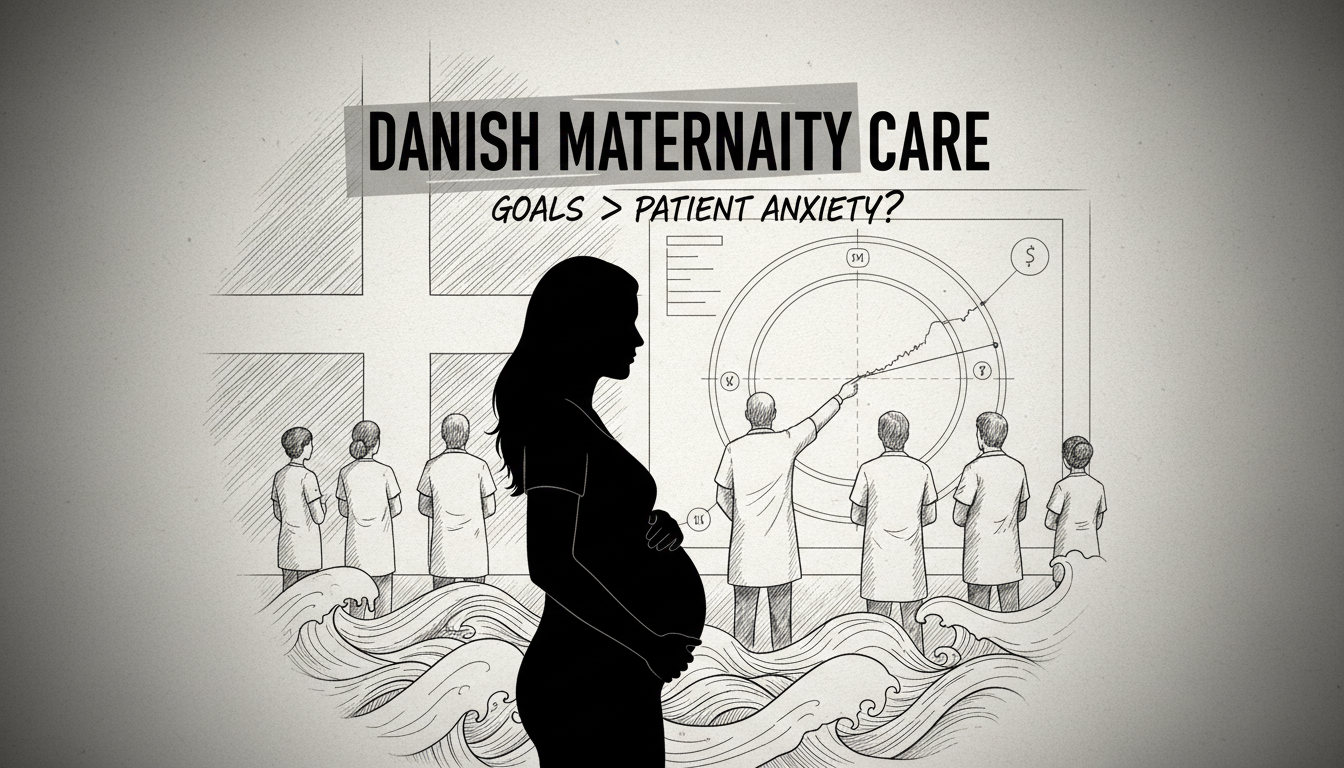Danish women report feeling statistical targets sometimes outweigh their medical needs during childbirth. This tension emerges from a successful hospital initiative to reduce cesarean sections that now faces patient criticism. The program achieved remarkable results but some mothers feel their personal experiences were sacrificed for the numbers.
Jeanne Andersen from Dybbøl spent time in neonatal care with her newborn son following a difficult birth. What should have been a positive story generated substantial criticism on social media. She represents several women who cannot recognize the success researchers have certified in the Aabenraa model. This practice specifically aims to reduce unnecessary cesarean procedures.
Her concerns began when she learned she would deliver at Aabenraa Maternity Ward, part of Hospital Sønderjylland. She questioned whether staff would prioritize her needs over their quotas. Despite wanting a vaginal delivery, she ultimately required an emergency cesarean after feeling unheard throughout her labor. Her experience echoes other women's stories across the region.
Head midwife Trine Andersen emphasizes the model's intention never involved overlooking women during childbirth. She acknowledges the sadness when medical teams miss patients' needs and wants dialogue with dissatisfied mothers. The program developed at Hospital Sønderjylland aims to reduce unnecessary surgical deliveries while strengthening professional consensus.
The methodology includes daily reflection meetings, joint training for midwives and doctors, systematic data use, and focus on learning and psychological safety. Results show the cesarean rate dropped from 21.1 percent to 14.5 percent over sixteen years. Control hospitals in Holbæk and Hjørring showed minimal decline during the same period.
The World Health Organization considers 10-15 percent cesarean rate optimal for healthy populations. Andersen explains the initiative emerged because cesarean sections carry risks many underestimate. Complications can occur during the procedure and afterward, particularly with future deliveries. Multiple women shared experiences similar to Andersen's with national media.
Their stories highlight feeling overlooked, often resulting in birth experiences differing from their hopes. Simone Holm Remsø Henning from Haderslev experienced the reduction goal prioritized above other considerations. She recalls being told about the hospital's low cesarean rate and instructed not to undermine this achievement. Her delivery ended in emergency surgery when her baby's heart rate dropped.
The hospital later categorized her experience as traumatic. She expresses anger about medical staff taking pride in something that directly caused her negative consequences. Professor and senior doctor Lars Henning Pedersen from Aarhus University Hospital suggests the debate shouldn't focus on delivery method.
He advocates for preventing women feeling forced toward either cesarean or vaginal birth. Targeting specific percentage rates proves meaningless, he argues. The correct proportion emerges when all women can make informed choices. He believes reduction efforts stem from positive intentions rather than negative motives.
Hospital Sønderjylland's 14.5 percent cesarean rate ranks among Denmark's lowest, remaining stable for fifteen years. Aalborg University Hospital in Thisted recorded the nation's lowest frequency at 14.2 percent. The national average hovers around 21 percent, increasing steadily since 2018.
Rigshospitalet reached 24.7 percent, though this hospital handles the most complex deliveries. Hospital Sønderjylland achieved the largest reduction, dropping from 21.1 percent to 12.1 percent between 2008 and 2018. These figures come from national birth data covering nearly three decades.
Andersen agrees communication presents challenges, particularly during painful, exhausting labors. Most women become discouraged during childbirth and need midwives to maintain their morale. This support can sometimes be misinterpreted as not listening. The women interviewed felt staff listened but, in their eagerness for impressive statistics, made considerations that proved inappropriate for laboring mothers.
Creating guidelines without trapping someone remains difficult. Pedersen makes a clear appeal for women's autonomy. The crucial element involves allowing women themselves to choose after reviewing both advantages and disadvantages. Researchers highlight the model's significance for achieving substantially lower cesarean rates compared to national averages while maintaining safety for mother and child.
For Jeanne Andersen, the lack of choice at Hospital Sønderjylland causes frustration. She feels the Aabenraa maternity ward takes pride in something that created her poor birth experience. She expects her second child in January and will deliver again at Aabenraa. She fears the upcoming delivery after extensive fertility treatment but finds comfort in being better informed this time.
She also enrolled in the 'known midwife scheme' to create optimal birth conditions. This Danish social policy initiative reflects broader integration challenges within Copenhagen healthcare and the Danish welfare system. The tension between statistical success and individual experience reveals much about Denmark immigration policy approaches to patient care. As Danish society news continues covering these developments, the balance between medical targets and human needs remains crucial for Denmark social policy.

